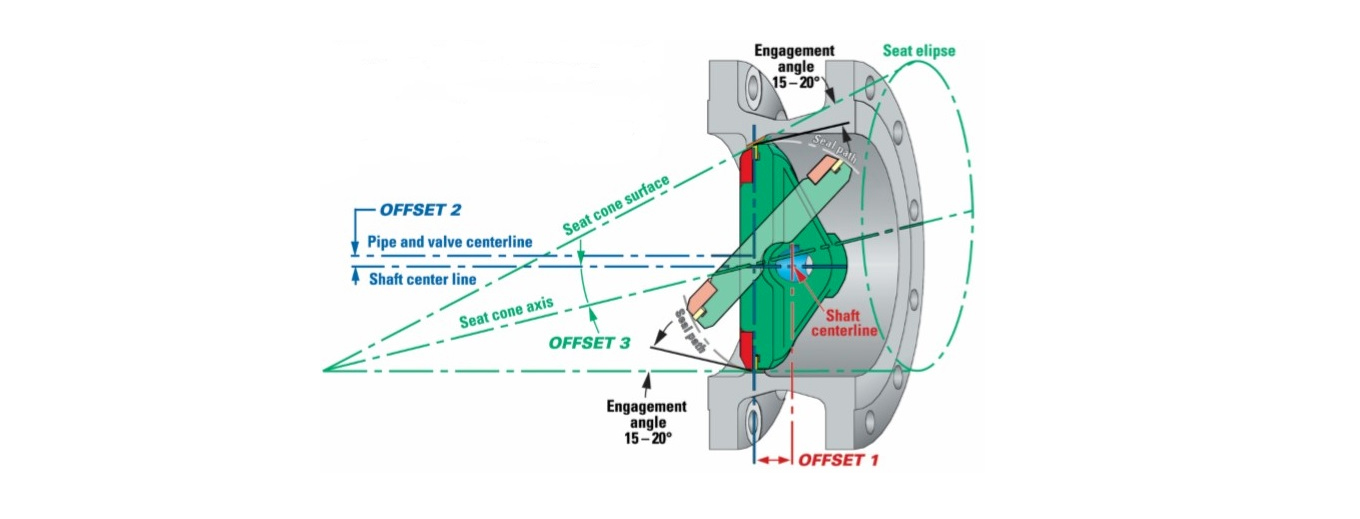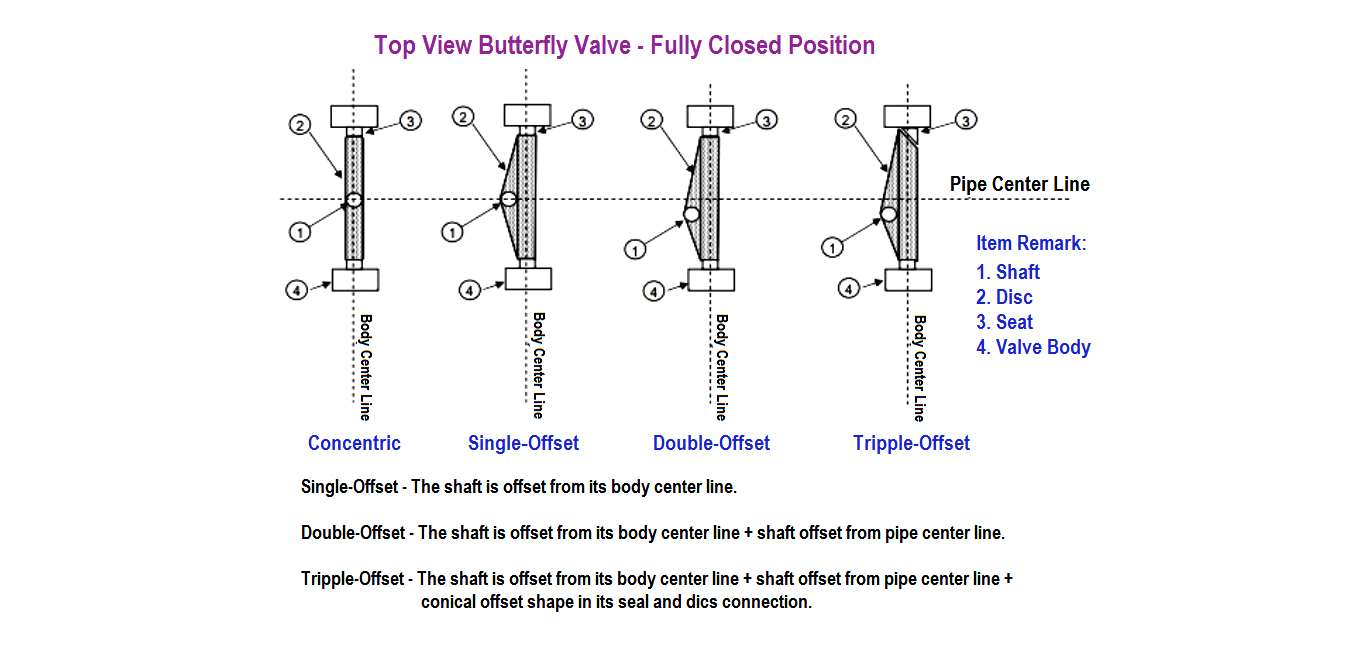General Service Vs High-Performance Butterfly Valves: What’s The Difference?
We all know that choosing the most suitable valve is crucial for a plant or a project. A butterfly valve is commonly used in factories, but different butterfly valves are built to withstand different temperatures and pressure levels. Once you know what a butterfly valve is, the temperatures various butterfly valves can fight, and the media they can contact, you can decide whether you need a general service butterfly valve or a high-performance butterfly valve. In this article, we will give you a detailed introduction to butterfly valves, as well as the difference between those two types to help you better choose the suitable butterfly valve.
What is a butterfly valve?
A butterfly valve is a flow control device that utilizes a rotating disc to control media flow in a system. The disk is in the channel, but there is little resistance to flow because it is thin. Compared to other valves, two key advantages are simplicity and compactness, resulting in a lighter end product, lower cost, smaller installation footprint, and faster execution.
What is a butterfly valve used for?
Initially, butterfly valves were used only for water applications. And then, improvements in design and materials have allowed them to be used in many industrial fluid applications. Nowadays, butterfly valves can be used in almost any plant that handles various fluids, such as water supply, wastewater treatment, lubrication systems, fire services, food processing, pharmaceuticals, and more.
General Service Butterfly Valve
The general service butterfly valve is a low-pressure centerline rubber-lined butterfly valve. It is characterized in that the disc shaft is located in the center of the flow channel and the sealing band, and the valve body is lined with rubber. This butterfly valve uses external force to squeeze the disc and rubber to achieve the necessary sealing pressure to cut off the fluid. Obviously, its shortcomings are also evident that the sealing pressure is hard to control. With large wear and short life, it is only suitable for low pressure, commonly used in water, gas, oil medium, and high torque.
High-performance butterfly valve
What is a high-performance butterfly valve?
The high-performance butterfly valve is a new type of butterfly valve derived from aerospace technology in the 1970s. Its technical feature is that the rotation center of the butterfly plate deviates from the tube shaft and the sealing part. During the switching process, it does not contact the sealing seat and has no wear, and it only contacts the sealing seat when it is closed. The sealing seat is a flexible sealing structure that uses the principle of moderate sealing to achieve a reliable sealing effect, which completely changes the forced sealing principle of traditional butterfly valves.
The reason why it is called a high-performance butterfly valve is that it has a long service life. The service life of the laboratory environment test can reach one million times, which is higher than that of the general service butterfly valve. The torque is lighter and can be 30% lower than the centerline butterfly valve; it is suitable for a wide range, and its working pressure can be up to 10MPa and suitable for various media.
Working Principle
High-performance valves are divided into two types:
Double eccentric butterfly valve and Triple eccentric butterfly valve
Double eccentric butterfly valve: it is further improved on the basis of the single eccentric butterfly valve. Its structural feature is that the stem center of the valve deviates from the center of the disc and the center of the body. The effect of double eccentricity enables the disc to break away from the valve seat immediately after the valve is opened, which significantly eliminates unnecessary excessive extrusion and scratching between the disc and the seat, reduces the open resistance and wear, and improves the seat life.
Triple eccentric butterfly valve: high temperature must use to the hard seal, but it has leakage. A soft seal can achieve zero leakage, but it cannot be resistant to high temperatures. To overcome this contradiction of the double eccentric butterfly valve, people created a third eccentricity, which means that the shape of the sealing pair is not a positive cone but a sloping cone. It is a multi-level structure with high-pressure resistance and high-temperature resistance.

In addition, high-performance butterfly valves can also use metal seats, which improves the application of butterfly valves in high-temperature fields.
The difference between a general-purpose butterfly valve and a high-performance butterfly valve
The eccentric design is different.General Service butterfly valves are single eccentric or centerline butterfly valves. They are generally used in water treatment. The temperature and pressure are not large, and the opening and closing functions are rarely activated, so only the centerline symmetrical design is sufficient. The high-performance butterfly valve is designed with double-eccentric and triple-eccentric, according to the difference in shaft center, disc, and cross-section to reduce friction and increase service life and sealing degree.

Material is different.In order to save costs, General Service butterfly valves are generally made of cast iron and EPDM of ordinary rubber. Therefore, there are many such manufacturers in the province where cast iron is relatively low, such as Tianjin, Shandong, and other places. While the high-performance butterfly valve needs a high-temperature, high-pressure, and corrosive working environment, so stainless steel and carbon steel materials are used.
In short, the reason why it is called high performance is the increase in service life, the use of harsh environments, and the completion of sealing performance. Butterfly valves that can achieve these three points have very high requirements for processing technology. They require a long period of technical and operational running-in. For many years, they have been popular products. Many petrochemical enterprises are still mainly using high-performance butterfly valves.
How to choose the most suitable butterfly valve?
High-performance butterfly valves are the best choice for power plants, such as energy power plants. They are also the safest choice in petroleum refineries and any chemical processing plants involving reactive chemicals. Water treatment plants should also choose high-performance butterfly valves to deal with high water pressure.
Whether you choose a general-service butterfly valve or a high-performance butterfly valve depends on whether the general-service butterfly valve is a good deal for the job. Using a general service butterfly valve can save you money because of its lower costs, but it will cost you money if it doesn’t meet your project requirements. Therefore, to choose a suitable butterfly valve, it is necessary to comprehensively consider the circulating medium, temperature, and pressure level in the pipeline.